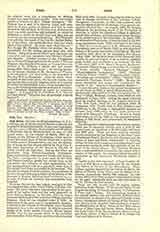

Fall River, Diocese of (RIVERORMENSIS), U.S.A., a suffragan see of the province of Boston, comprises the counties of Bristol, Barnstable, Dukes, and Nantucket, with the towns of Marion, Mattapoisett and Wareham in Plymouth county, Massachusetts, an area of 1194 square miles. It was created March 12, 1904, by a division of the Diocese of Providence, which had included the entire State of Rhode Island and a portion of southeastern Massachusetts, and has the distinction of being the first diocese erected by Pope Pius X. The total population of the diocese is 309,438, of which 151,633 are Catholics. Among the latter are Americans, Irish, French-Canadians, Portuguese, Poles, and Italians, with some few Greeks and Syrians. The heavy immigration in years past of the Irish and French-Canadian people has caused them to far outnumber the Catholics of other nationalities; but this immigration is now at a standstill, while that of Portuguese and Poles is steadily on the increase. The diocese, by reason of recent creation, has no history of its own, its records being included in the history of the Dioceses of Boston, Hartford, and Providence (q.v.), in each of which its territory has successively been included.
WILLIAM STANG, the first bishop, was born in 1854 in Langenbrücken, in the Grand Duchy of Baden, Germany. His early education was received in the gymnasia of his native land and the petit seminaire at Saint-Nicolas, Belgium. In October, 1875, he began the study of theology at the American College, Louvain, Belgium, where he was ordained priest in 1878. In September of the same year he emigrated to America, to labor in the Diocese of Providence, where his first assignment was to the cathedral. In 1884 he assumed charge of St. Ann’s parish, Cranston, Rhode Island. Shortly after he was named rector of the cathedral and chancellor of the diocese, positions which he ably filled until 1895. In April of that year he went to Louvain to become vice-rector of the American College. Georgetown University, in 1887, had conferred upon him the degree of doctor of theology; but a greater recognition awaited him. In August, 1898, the Belgian bishops as the governing board of the University of Louvain, to which the American College is affiliated, named him professor of fundamental moral theology in the schola minor of the university. In April, 1899, he returned to Providence, to become head of the diocesan Apostolate Band. While still head of the latter, in 1901, he was made pastor of St. Edward’s church, Providence, and on March 12, 1904, he was appointed bishop of the newly erected See of Fall River. His consecration took place in the cathedral, Providence, May 1, 1904. In the short space of two years and nine months he proved himself to be a zealous, indefatigable worker, and charitable to an extreme. He died February 2, 1907, in St. Mary’s Hospital, Rochester, Minnesota. Bishop Stang was the author of a number of works, notably: “Pastoral Theology” (1896); “Historiographia Ecclesiastica” (1897); “Business Guide for Priests” (1899); “Pepper and Salt” (1901); “Socialism and Christianity” (1905); “Medulla Fundamentalis Theologise Moralis” (1906). He also left many pamphlets and essays and contributed frequently to the “American Ecclesiastical Review”.
DANIEL FRANCIS FEEHAN, the second incumbent of the see, was b. in 1855, at Athol, Massachusetts. His classical and philosophical studies were pursued in St. Mary’s College, Montreal, Canada, from which he was graduated in June, 1876. During the three following years he studied theology at St. Joseph‘s Seminary, Troy, New York, where he was ordained priest December 20, 1879. Parish work in West Brighton and Fitchburg in the Diocese of Springfield engaged his energies until 1889, when he was made permanent rector of St. Bernard’s, Fitchburg. He was in charge there when, on July 2, 1907, he was appointed second Bishop of Fall River, and consecrated September 19 following.
The diocese has a well-equipped educational system. There are 28 parochial schools with a staff of 191 teachers and an enrolment of 10,451 pupils, 4464 boys and 5987 girls. There are three convent boarding schools conducted by the Religious of the Holy Union of the Sacred Hearts, the Sisters of St. Dominic, and the Sisters of Jesus and Mary, respectively. A boarding college for boys and young men pursuing classical and commercial courses is under the guidance of the Fathers of the Sacred Heart. The Christian Brothers have a well-established commercial day school with a register of 363 pupils. An industrial school for girls is conducted by the Franciscan Missionary Sisters of Mary.
Charity is also well organized. A large hospital, St. Ann’s, at Fall River, is presided over by the Dominican Sisters of Charity of the Presentation. Three orphan asylums directed by the Sisters of Mercy, the Sisters of Charity (Grey Nuns), and the Sisters of St. Francis, respectively, shelter 600 orphans. In connection with one of these asylums is maintained a home for the aged. Admirable work has also been done by the St. Vincent a Paul Society.
There are 108 secular and 20 regular priests laboring in the diocese. Of the secular clergy 57 are English-speaking, 30 French-speaking, 15 Portuguese, 5 Poles, and 1 Italian. The Dominican Fathers of the Sacred Hearts, and the Christian Brothers have communities, as also have the Sisters of Charity (Grey Nuns), Dominican Sisters of Charity of the Presentation, Sisters of St. Dominic, Felician Sisters, Franciscan Missionaries of Mary, Sisters of the Holy Ghost, Sisters of Holy Cross and Seven Dolors, Religious of the Holy Union of the Sacred Hearts, Sisters of Jesus and Mary, Sisters of Mercy, Sisters of St. Joseph (Le Puy), and Sisters of St. Francis.
EDWARD J. CARR

